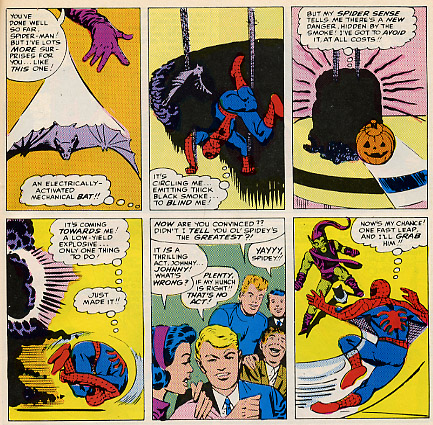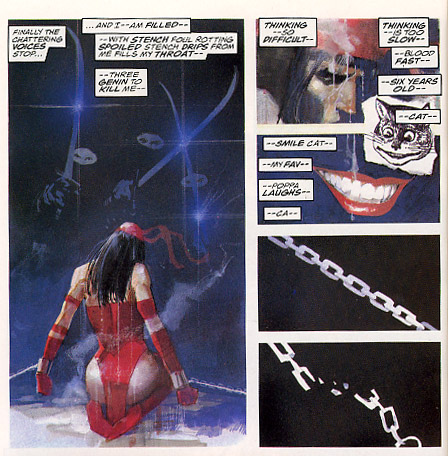Patreon Annual Membership
Patreon has unveiled a new option for patrons — the ability to pay once for the entire year. Here’s what you need to know about Annual Membership.
The content you are trying to access is only available to members.Patreon has unveiled a new option for patrons — the ability to pay once for the entire year. Here’s what you need to know about Annual Membership.
The content you are trying to access is only available to members.Welcome to September, and the kids are headed back to school — either in person or through virtual learning. Let’s talk about what’s in store this month.
The content you are trying to access is only available to members.Brad and Dave talk about their experience running their first virtual comic convention! PLUS — Dave talks about his third Eisner Award nomination and his second self-administered haircut… both of which ended up in disappointment.
Questions asked and topics covered…
Brad Guigar is the creator of Evil Inc and the editor of Webcomics.com Dave Kellett is the creator of Sheldon and Drive.
Earlier this summer, I wrote that we may have to prepare for a future in which Media Mail is no longer offered by the United States Postal Service. When that happened, I actually got pushback from folks who insisted that the USPS had always made rate-hike requests in October for the following year — and that there was no reason to expect that things would be different now. My response was that I hoped I was wrong.
I did not get my wish.
The content you are trying to access is only available to members.Wanna do better at social media? It can be boiled down to two sentences.
Like less. Share more.
It’s very simple. You Like when you should Share, and you Favorite when you should Retweet.
First of all, get into the proper headspace. As a webcartoonist, you’re on social media for one reason — and one reason alone. You’re there to promote.
Your Aunt Mildred is on social media to post pictures of her nieces and to take quizzes that tell her which Deep Space Nine character she is.
You can do all of that (if you choose), but the primary reason you’re there is to promote.
And branding is a huge part of promotion.
Branding tells the world who you are. A good brand should have a headline and several sub-heads. In other words, there should be one theme that develops around the things that you post about yourself (and your comic). And, secondary to that, there should be several other themes.
What’s my brand?
HEADLINE
SUBHEADS
All of the above combines to create my personal brand. Is it accurate? Yes and no. All of the above are truthful, but my presentation of them is decidedly one-sided.
For example, if you follow me on social media, you’re going to hear a lot about my successes. I’m going to post positive stuff all day long. You’re going to hear much less about my failures and shortcomings. Is that because I don’t experience them? Hell, no.
It’s because I know why I’m on social media.
And it ain’t to tell you about my failures.*
So this: Liking and Favoriting are nearly invisible acts.
Sharing and Retweeting are highly visible acts.
If you want to reinforce your brand, you need to do so visibly.
Beyond simple branding, this boils down to one core concept: The Three Cs of Social Media. Social media is about Content, Commercial and Curation.
Sharing and retweeting? That’s straight-up Curation.
Along with reinforcing my brand, Curation enables me to slide in more Commercials.
AND, since my Curation is MUCH more likely to generate engagement, when I DO post Commercials, they are FAR more likely to be seen by a larger number of people — because social-media favors people who make engaging posts. Go back and look a the number of Likes and Share those branding posts earn.
And that’s important to me because I know why I’m on social media.
Look at your own social-media feeds.
Do you know why you’re on social media?
Writing a good joke is a balancing act. There are so many ways to upset the delicate harmonies that work together to make something funny. Luckily, there are a few missteps that have recognizable patterns. One of them is telegraphing the joke.
The content you are trying to access is only available to members.An ellipsis is a punctuation mark comprised of three dots that indicates an intentional omission of a word, sentence, or whole section from a text without altering its original meaning. In comics, however, it’s often used to indicate a pause — or to tell the reader that the dislogue is about to be continued in the next panel (or the next page). But it’s an easy typographical tool to misuse — and abuse. What’s the right way to use those three little dots? The answer…
The content you are trying to access is only available to members.Comics educator and author Scott McCloud calls them the “bulgy Edsels of comics iconography.” Indeed, cloud-like thought balloons are spurned by most comics artists.
Let’s talk about why that is… and whether it’s warranted or not.
In the early days of comic-book history, as artists and writers struggled to build the lexicon of a fledgling art form, it’s no question that the thought balloon was becoming a crutch. Instead of a glimpse into the thoughts of a character, it was a way of explaining action and plot that should have been illustrated instead.
There’s no doubt that the early Lee/Ditko Spider-Man comics were thought-balloon heavy.

In Panel One, the thought ballon “an electrically-activated mechanical bat” attempts to explain a plot feature that should have been conveyed through illustration instead. Panel Two also uses a thought balloon to do the job of the illustration. In fact, you can see it happening throughout the scene above.
As comics art matured, this overuse of expositional and explanatory thought balloons became frowned upon.
And although comics legend Jack Kirby famously used movies as inspiration for his visuals, the comics industry itself was soon regarding Hollywood as a competitor for consumer dollars as well. And comics artists were encouraged to go beyond inspiration, towards emulation.
Comics writer John Ostrander reported that he was forbidden from using thought balloons “because they didn’t have them in movies.”
Although it was a good idea to limit the overuse of thought balloons, the fact remained that conveying inner thoughts efficiently was a necessary part of some storytelling.
When writer/artist Frank Miller presented Elektra’s internal monologue in narration boxes, it quickly became adopted as a replacement for those exposition-heavy thought balloons.

Even today, narration boxes are greatly preferred for internal monologue, and thought balloons are given a weary side-eye. In fact, McCloud considers thought balloons to be patronizing in their very nature! (Somehow the pictogram thought balloons of Asterios Polyp are spared this scorn.)
I like thought balloons — used correctly. Those early craftspeople were right in rejecting the thought balloon used as a storytelling crutch. But criminalizing thought balloons entirely is like throwing the baby out with the bath water.
Comics writer Kurt Buseik may have put it best: “Eschewing thought balloons as a creative choice can result in interesting approaches. Eschewing them as a blanket formula, though, is just dumb.”
Brad and Dave talk about writing characters from outside your own personal experience. Empathy as a writing tool! Then, a listener says they’re losing interest in their comic — can Dave and Brad help?
Questions asked and topics covered…
Brad Guigar is the creator of Evil Inc and the editor of Webcomics.com Dave Kellett is the creator of Sheldon and Drive.
Listen to ComicLab on…
ComicLab is hosted on Simplecast, helping podcasters since 2013. with industry-leading publishing, distribution, and sharing tools.
It’s pretty easy to see the influence of manga on comics being produced today. Scrolling through Webtoons, it’s obvious that an entire generation of young comics creators cut their teeth on comics originally made in Japan. In general, that’s tremendous! The creativity, the kinetic energy, the jaw-dropping art — it’s all worthy of emulation.
But when it comes to word balloons, something’s getting lost in the translation.
The content you are trying to access is only available to members.